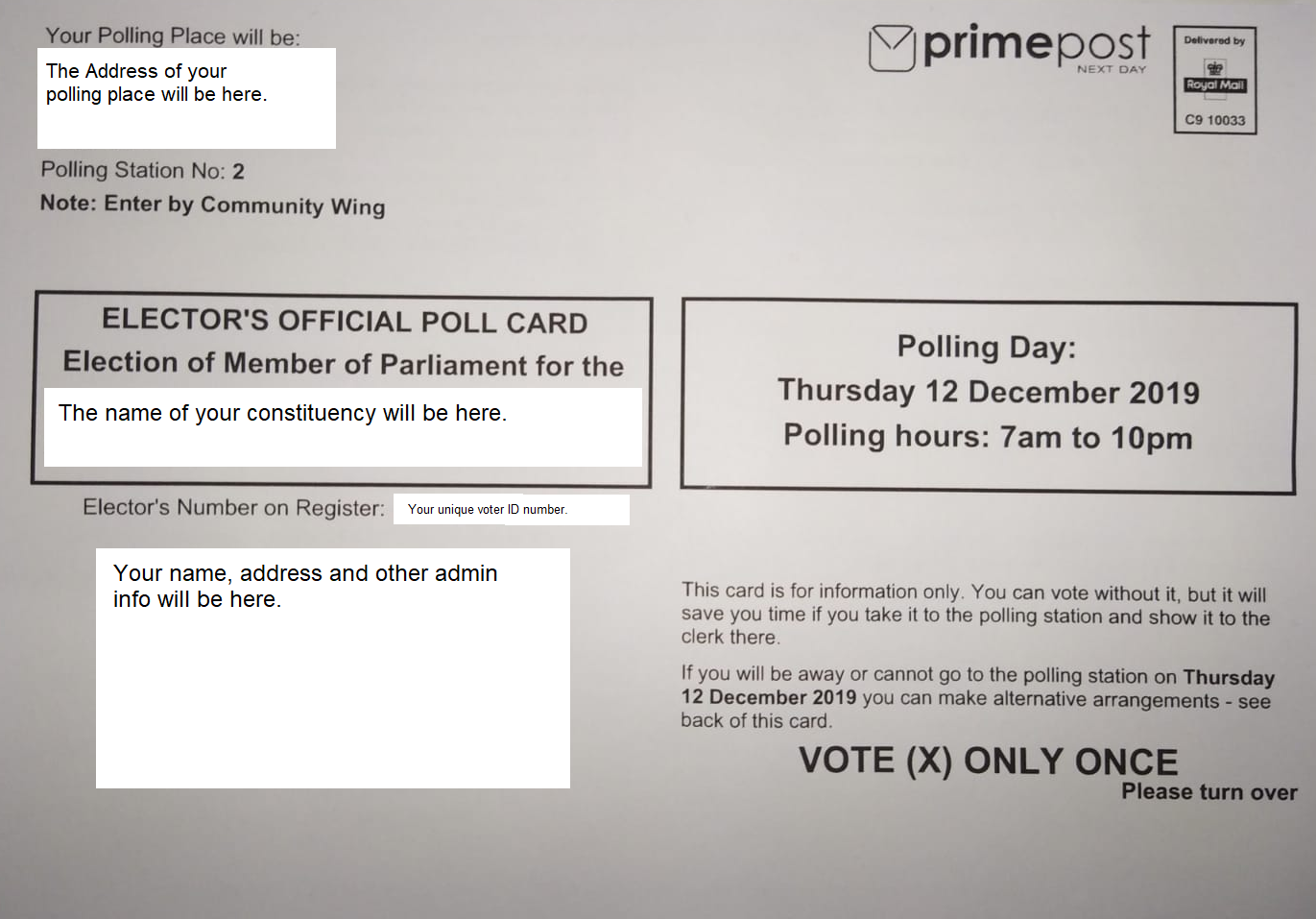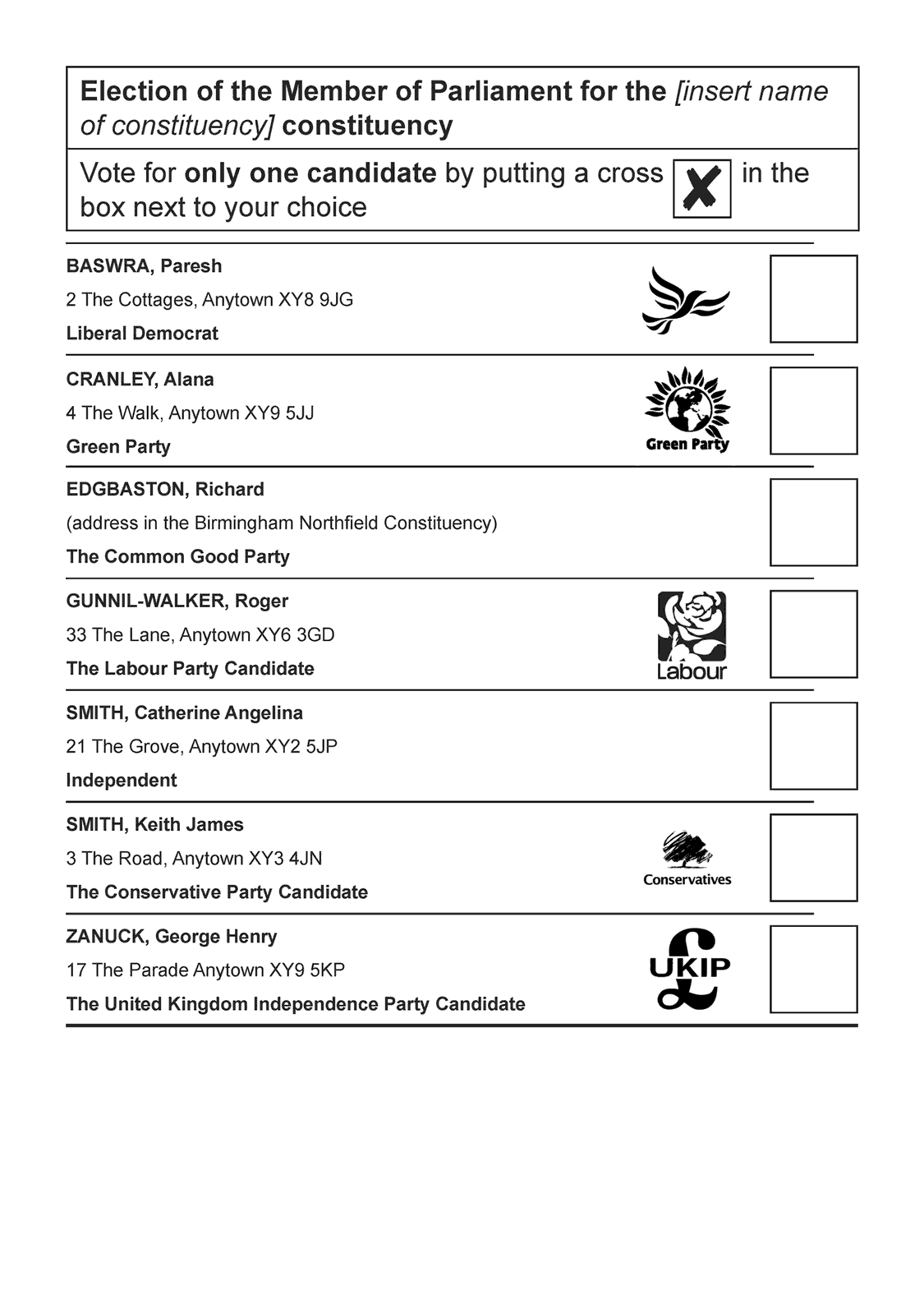“Ankh-Morpork had dallied with many forms of government and had ended up with that form of democracy known as One Man, One Vote. The Patrician was the Man; he had the Vote.” – Terry Pratchett
(This post and the research underpinning it was undertaken in my own time and outwith other political work that I do. It is presented here free to access as a public service but if you’d like to throw me a wee tip to support that work, you can here.)

Disclosure and Disclaimer: Although I am politically active – albeit not a member of any political party – this guide is intended to be objective and politically neutral. This is a guide on how to vote and is written with a first time voter in mind. It is not a blog to try to convince you to vote for or against any particular person or party but to help you cast your vote and to understand how that vote translates and contributes to the final result.
For the first time since 2015, the UK has managed to complete a relatively normal length of time between General Elections, though since the repeal of the Fixed Term Parliament Act, a “normal” period of time is no longer the fixed period of five years but may be called at any time by the incumbent Prime Minister so long as not more than five years has passed. The absolute deadline for the current term was January 2025 but Prime Minister Rishi Sunak has pulled the trigger a little earlier than that (and a little earlier than most commentators expected as many thought we’d see an election around September or October). Whatever his reasons – and he doesn’t strictly need any – Parliament has been dissolved, all of our MPs have lost their jobs and many of them – as well as a slew of other potential candidates – are now courting your vote to try to win a seat in the House of Commons. This vote will take place on Thursday 4th July 2024.
If you want to take part in this election, and particularly if it’s your first time ever doing so or if it’s not but you’d like to know how your vote translates into seats and MPs, then this guide is for you. If you’re looking for someone to tell you who to vote for, then I won’t do that here but please do check out my list of all of the published party manifestos which may help guide your vote.
Step One:- Register to Vote
The UK operates an “opt-in” style of voter registration. In order to be eligible to vote in this election, you must be 18, must be a UK, Irish or qualifying Commonwealth citizen, and there are some other requirements around residency either within the UK or abroad as well as a few other requirements – See the full list here. In addition, you must be registered on the electoral roll. If this is your first time voting, you may not have registered. You may also have dropped off of the roll if you moved house recently or other life circumstances have occurred like a change of marital status or name. If you want to register to vote in the upcoming General Election you must be registered before 4pm on the 18th of June.
You can register to vote here.
Step Two:- Deciding How to Vote
Most people vote in person at their local Polling Place (also called a Polling Station – the distinction is fairly academic). This will almost always be a public building like a local school or library but you can check your local Polling Place here. You will also likely receive a registration card before the vote that has the information on where to vote on it. It is important to go to the place where you are registered as your vote won’t be counted if it is cast elsewhere.

Some people also vote by post. You can register for a postal vote here (and must do so before 5pm on the 19th of June). You will then get your ballot paper sent to you and you can post it back (or take it to your Polling Place) before the end of the voting day on July 4th. Some like to vote by post because they’ll be on holiday on the day or because travel to the Polling Place is difficult but you don’t need a reason to vote by post. You can’t change your vote once it is posted though so if you are able to vote on the day, you may wish to consider that voting early means that something might happen between that time and the end of the election that might have influenced your vote if you cast it on the day.
Finally, another way to vote is by “proxy”. This means that you allow a trusted person to go to the Polling Place in person and cast your vote on your behalf. This might be particularly useful if, for example, you fall ill before voting day or you suddenly have to travel but, again, you don’t need a reason to apply for a proxy vote. You can register for a proxy vote here. The deadline is 26th June.
Step Three:- Preparing to Vote
In 2023, the UK Parliament passed a law mandating that voters in UK elections and referendums and voters in English local elections must carry valid photo ID when they go to vote in person (postal voters must pass an ID check when they register so are exempt when they cast their vote). However, as the UK doesn’t have a universal and mandatory ID system, this means that it is possible to be a valid and registered voter who does not have the required ID. Common forms of photo ID include driver’s licence or passport as well as several others (the full list can be found here). The ID card doesn’t need to be in date (an expired passport is accepted) but the photo does need to be similar enough to confirm your identity. If you have a photo ID that is not on the valid list then it will not be accepted so do check to confirm. If you do not hold any valid photo ID then you can either apply for one if eligible or you can apply for a Voter Authority Certificate that will be accepted for the purposes of allowing you to vote. You can apply for the certificate here.
It will also be useful to understand where you live in relation to the electoral map. In this election, the country is split into blocks of roughly equal population known as constituencies. For this election in particular, the boundaries between each constituency has been changed to reflect recent changes in the UK’s population and its distribution (the process for determining the boundaries and the controversies around them are beyond the scope of this article but if you wish you can read about it here and find a map where you can determine your voting constituency and how it compares to the previous one).
Step Four:- Casting Your Vote
As I mentioned earlier, this article isn’t the place for me to tell you who to vote for other than to point you at my list of party manifestos here which may help guide your vote.
In this election, you will not be voting for a political party directly (despite the attention given to those parties in the overall media) but for a person standing in your constituency who may or may not be a member of a political party (most will be, but a few may stand as “independents”, without a party). In practice, political parties demand a strong degree of loyalty from their candidates so the distinction can be somewhat muted (this said, during the last Parliamentary session, my local MP “defected” from one party to another due to their personal views aligning more with their new party than their old one, so personal character can also be important).
Once you have decided who you wish to vote for, it’s time to fill out your ballot paper either at your Polling Place (don’t forget to bring your photo ID!) or via one of the alternative methods outlined above.
If you’re voting in person, you should turn up at the Polling Place on the day of the vote between the times indicated on the election card – usually between 7am and 10pm. Things can get busy at peak time (e.g. when folk come home from work). Do try to be inside the building before the 10pm deadline (if you’re stuck in the queue to enter at 10pm you’ll usually still be allowed to vote but no-one else will be allowed to join the queue after this point. Try to not turn up at the last minute).
Either at the Polling Place or via your postal vote package, (and after a bit of admin – the staff will help you, especially if you tell them you’re a first time voter) you will be given a ballot paper a bit like this one.

The candidates will be shown in alphabetical order according to surname and below their name will be shown their registered address and either the name of the party to which their belong (if any) or perhaps a slogan chosen by the party which represents something about them. The party’s logo may be shown to the right.
You may cast your vote by placing an X in the box beside your preferred candidate. Do not make any other mark on the paper and do not rank candidates in preference order as you may have done in the council elections as this will invalidate your vote. In every election there are always stories of creatively marked ballot papers being accepted or rejected for various reasons and sometimes this is done by people as a form of protest when they want to be counted as a voter rather than an apathetic abstainer but do not wish to vote for any of the candidates in their area. When done deliberately knowing that this will result in the ballot being rejected, this is known as a spoiled vote. However, if you do not wish to deliberately spoil your vote, don’t try to be creative – just stick to a simple, clear and unambiguous X fully inside the box of your preferred candidate. If you make a mistake, or change your mind between making the mark and dropping your ballot paper into the box, tell a member of staff and they’ll give you a new sheet. If you’re happy though, just put your ballot in the box near the polling station and you’re done. Your vote is now cast and cannot be changed.
Step Five:- Counting the Votes and Determining the Winners
Once all of the votes are cast, the boxes of ballots will be securely transported to various counting stations nearby where the boxes will be opened and the contents counted while being witnessed by various people with a stake in the race (this helps keep the vote honest and fair). Under the First Past the Post voting system used in this election, the votes cast around the country don’t influence the votes cast inside your or any other constituency (other than indirectly via peer pressure and media etc). Each MP seat is determined by a race between the candidates in each individual constituency.
The winner of each seat is the candidate who wins more votes than any other candidate in that constituency. They do not need to win more than 50% of the total votes cast and we don’t see things like the lowest candidate being eliminated and then runoff ballots held or votes being redistributed. There is only a single round of counting.
While quick and easy, this does mean that if a seat is closely contested then the winner may end up with a relatively small fraction of the total votes. If we imagine a seat where four candidates get almost equal numbers of votes then they would all have roughly 25% of the total votes and the winner might be the one who actually got 26% instead of 24%. This has in fact happened in recent UK history. The current record for the lowest percentage of votes cast for a candidate that won the seat was set in 2015 by Alasdair McDonnell who won the Belfast South seat with 24.5% of the overall vote.
Once all of the constituencies have counted their votes it’s time to report their results. The very keen can stay up all night to watch the live media coverage, with results usually starting to trickle in between 0200 and 0400 on the Friday after voting day and results usually being pretty well understood enough to be read out by bleary-eyed commentators at breakfast time (I know…I’ve been one of them…).
And then it’s time to work out who the next Government will be. If a single party wins more than half of the constituencies across the UK then they will have a majority government and may rule without help from any other party. If not, then they may look to another party to either form a formal coalition with (as the Conservatives and Liberal Democrats did in 2010) or to form a somewhat looser alliance (As the Conservatives and the DUP did in 2017). Alternatively, the largest party may decide that they can form a minority government where they cannot absolutely count on another party to support their policies but may either try to pass legislation by forming coalitions on an issue-by-issue basis or they may count on disunity in the Opposition parties preventing them from blocking legislation.
In any case, it is usually expected that the leader of the largest party will become the Prime Minister and de facto leader of the country (this is not always the case in other countries where proportional voting systems allow for, for example, a small party to take a leadership position because they are a lynchpin or kingmaker in a coalition between two larger, generally opposed parties – see the Danish political drama Borgen for a window into the kind of politics that this can create).
Note that under the UK’s voting system, it is more than possible that parties can win a large number of seats compared to their overall national vote share (coalitions are rare in the UK for this reason). Since WWII there hasn’t been a general election where the winning party has received more than 50% of the overall popular vote. It also means that it is possible for relatively small parties with diffuse support across the entire country can get a substantial vote share (say, 20%) but win few, if any, seats because they don’t get the highest vote share in any particular constituency. Finally, nationalist and regionalist parties (like the SNP) can win substantial vote shares and many seats within their particular nation/region but get a very low “national share” of the vote because they don’t stand candidates anywhere outwith Scotland.
This is a fundamental issue with First Past the Post where it tends to concentrate power into the largest parties in a way that tends not to happen in more proportional systems but those systems have another tradeoff in that it’s generally much more complex when it comes to casting your vote and understanding how that vote translates into power. However, this isn’t the place to do a full comparative analysis of various voting systems (see my other voting guides for some of them). Until then, this is the system we have for this election, and this has been your guide on how to vote in the 2024 UK General Election.
